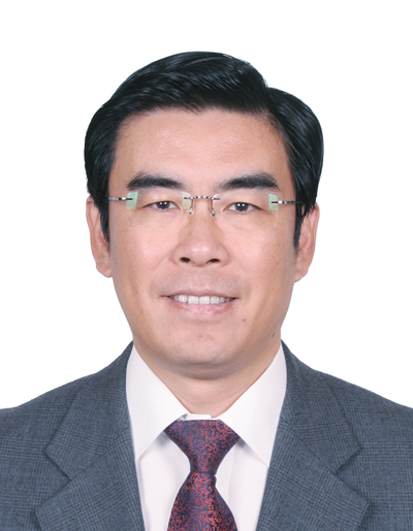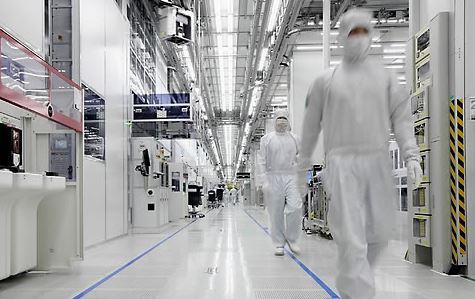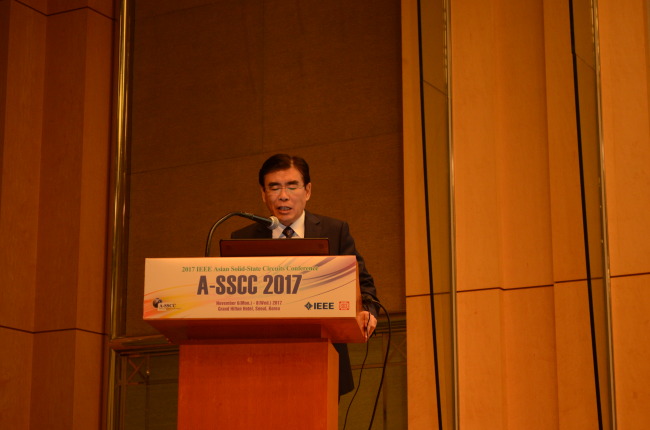[Reshaping Semicon Map]
The Korea Herald is publishing a series of articles dissecting the status and plans of South Korea’s leading semiconductor businesses that are shifting the shape of the global market. This is the fourth installment. -- Ed.
With increasing efforts to promote its semiconductor industry at the government level, it may be possible for China to step closer to first-tier technologies by 2035, according to a Chinese professor who is known as a “semiconductor tutor” to President Xi Jinping.
Wei Shaojun, dean of the department of micro- and nano-electronics at Tsinghua University, said it is true that the Chinese government is aggressively moving to foster the integrated circuit industry with a huge investment fund worth 138 billion yuan ($20.9 billion) by 2020, and such a move by the world’s biggest chip market will bring changes to the global market.
“It may be possible for China to step closer to first-tier technologies by 2035,” professor Wei said in an interview with The Korea Herald on Nov. 7, after he attended the IEEE Asian Solid-State Circuits Conference in Seoul.
However, he stressed, “It is not a threat to the world market. It is just a new normal.”
 |
Prof. Wei Shaojun of Tsinghua University |
“In the past three years, there was a lot of discussion about China’s semiconductor industry, including both positive and negative aspects,” the professor said. “Many from the US worry about the booming of China’s semiconductor industry. China is booming. It is not a threat; it’s just a normal rise and development of industry. Don’t worry about that.”
China has been the world’s largest IC market since 2013. As the biggest producer of mobile devices and consumer electronics, it is crucial to global chip giants such as US-based Intel and Korea-based Samsung Electronics and SK hynix.
As of 2016, the Chinese IC industry’s revenue stood at 433.55 billion yuan, growing 20.1 percent from the previous year.
Despite the rapid growth, internal evaluations of the industry were poor due to the fact that a mere 160 billion yuan, or 25 percent of the market, was created by Chinese players.
“China imports around 65 percent of semiconductors from outside, and some people worry about importing too much,” Wei said. “From outside, they also worry from a different angle about China’s purchases. What if China one day stops buying?”
The trade imbalance in the IC industry triggered the Chinese government to come up with a national plan for promotion of the industry with the following goals: reach 1 trillion yuan in revenue by 2020; start mass production of chips on 16- and 14-nanometer process technology; target global markets for mobile devices, the Internet of Things, cloud computing and big data systems on chips.
“China’s booming IC industry will give everybody an opportunity for collaboration,” Wei said. “Many foreign companies like Intel and Samsung are developing their businesses in China, taking advantage of China’s big market and favorable government policies, including tax incentives and free use of land and public infrastructure.”
 |
(Yonhap) |
Looking at the history of the world’s semiconductor industry, leading trends and market leadership have been transferring from the US to Europe, from Europe to Japan, then from Japan to Korea. And recently, Taiwan is apparently trying to take over some areas.
Wei believes it is time for China to transform the global market by taking over its leadership. But he acknowledged China would need at least 15 years to reach closer to state-of-art technologies.
“I am not sure whether this transfer will be successful or not, but the government is very aggressively moving to promote the industry,” the professor said. “What we can do for sure is to make efforts not to widen the technological gap with leading countries. We are keeping at it about 10 years at the moment.”
As first-tier chipmakers are facing greater complexity in developing cutting-edge technologies down to single-digit nanometers, the growth in the technological gap between China and other countries could slow down, providing a chance for the Chinese to catch up.
 |
Prof. Wei speaks at the Asian Solid-State Circuits Conference held in Seoul on Nov. 7. (Kaist) |
“I’ve proposed to the government to pay more attention to fundamental research in order to boost the industry,” he said. “It should invest in what will drive the industry 10 years later.”
As the biggest producer and consumer of electronics goods, Wei forecasts that the growth potential of the Chinese IC industry lies in the mobile, IoT and consumer electronics markets.
“There will be areas of collaboration between Korea and China for future growth of the IC industries of both countries,” Wei said. “Both governments can create a fund at the national level in terms of R&D, human talent and joint businesses, with an aim to create a new market.”
By Song Su-hyun (
song@heraldcorp.com)










![[Today’s K-pop] Blackpink’s Jennie, Lisa invited to Coachella as solo acts](http://res.heraldm.com/phpwas/restmb_idxmake.php?idx=644&simg=/content/image/2024/11/21/20241121050099_0.jpg)